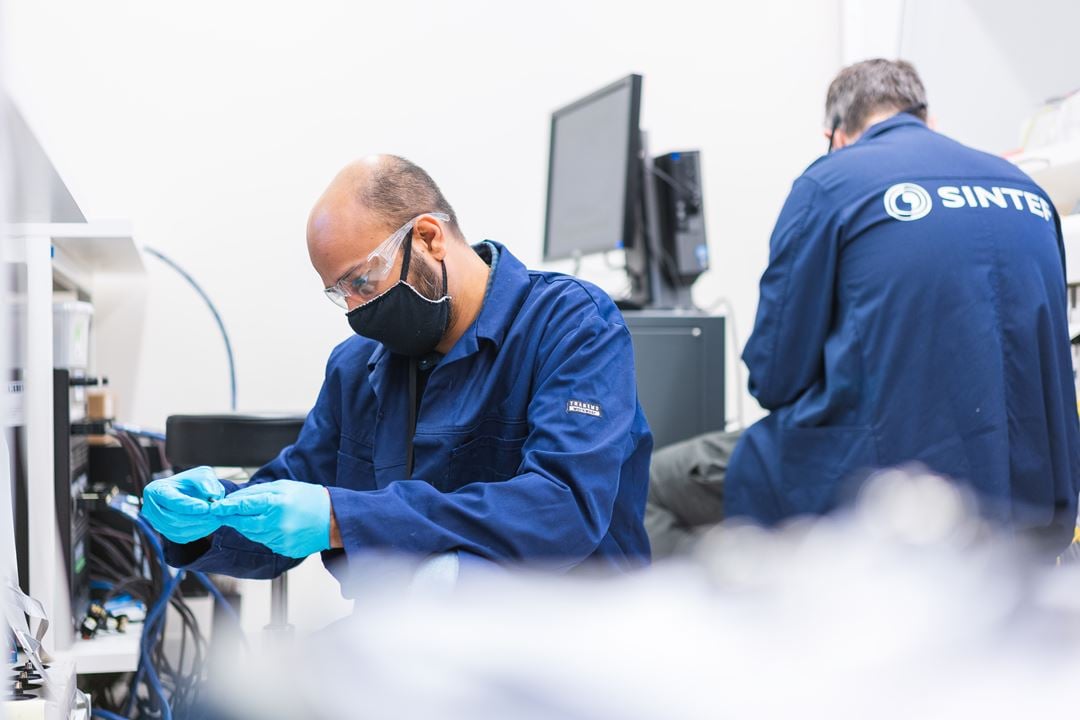The laboratory will be located in Trondheim and will give Norwegian businesses with ambitions in the battery industry the opportunity to compete at an international level.
– Norway and SINTEF have excellent research environments within electrochemical research. Batteries as a research and innovation topic already engages 150 researchers in SINTEF. We are now directing our activities at several of our locations towards a new, large SINTEF laboratory to support the current realization of battery production industry in Norway. To succeed with such an industrial ambition, it is necessary to have a world-class research infrastructure that can contribute to the development and verification of the technology in production lines before it is scaled up to factory level, says CEO Alexandra Bech Gjørv in SINTEF.
The new infrastructure forms part of a larger national research infrastructure for batteries which SINTEF has applied for in collaboration with Norwegian universities and research providers (i.e. IFE, NTNU, UIO, UiA and FFI), and will include a complete laboratory to produce battery cells up to industrially relevant size and with quality and quantity to satisfy industry needs. The laboratory will complement existing infrastructure for material development and characterization, small-scale cell production and associated electrochemical testing, system testing, facilities for electrolysis and hydrometallurgy relevant for recycling, as well as multi-scale modelling and simulation along the entire value chain for batteries.
This complementarity includes all stages of cell production for current and future battery technologies: Electrode preparation, assembly of battery cells in a dry atmosphere, and electrochemical formation and testing of the batteries. After testing out their concept in SINTEF Battery Lab, the industrial actors will be able to scale up to their own industrial pilot plants which will be located where the factories are built.
– We hope that a significant part of the investment will be financed through the Research Council's infrastructure program, but we consider it crucial to get started quickly, so that Norwegian interests can assert themselves in the critical race for knowledge that we have insight through our many research and innovation projects in Europe. The investment decision means that SINTEF can maintain its position as a leading player in European battery research that develops important knowledge for Norwegian business and industry. The battery industry is being established here and now, and Norway must take advantage of the opportunity window now to take part in the development. Without research infrastructure, we will be left in the starting pit, says Bech Gjørv.
SINTEF is a key player in the research environment around batteries in Norway and Europe, and now has five active and four completed projects in battery research funded by the European framework program for research and innovation. In addition, SINTEF co-authored the Strategic Research Agenda for value creation from batteries in Europe and plays a central role to Batteries Europe ETIP (European Technology & Innovation Platforms), Batteries European Partnership Association, Battery2030 + and the European Battery Alliance.
Green growth adventure, competitive advantages for Norway
Batteries are the green electrical value chain in Norway with the greatest value creation and employment potential, and the establishment of industrial battery cell production will be crucial to trigger this. The Confederation of Norwegian Enterprise (NHO) estimates in the report "Green electrical value chains" from 2020 that a value chain related to battery production can create up to 20,000 jobs and has a turnover potential of around NOK 90 billion in 2030. Turnover will have the potential to more than double in the period up to 2050.
Siemens Energy has estimated that around 25 % of the costs in the production of a battery cell can be linked to investments in production facilities and costs to input factors such as labour and energy. The remaining 75 % is about the utilization of the materials and efficient logistics.
Norway has very strong traditions and expertise in the extraction and processing of raw materials and metals. Together with the fact that production can take place using low cost and renewable energy, all indications are that knowledge will be the key enabling the delivery of the most competitive batteries in the world - both when it comes to climate footprint and cost.
What does Norwegian industry think about the need for research infrastructure?
FREYR
One player that has come a long way in realizing plans for battery cell production in Norway is FREYR, which will produce battery cells for stationary storage and for the marine market as early as 2022 in Mo i Rana.
– SINTEF has been one of FREYR's early strategic partners in the development of production facilities and the supporting value chain. This investment will ensure that Trondheim is a hub for battery tech and research in Norway. With production, materials, and skills concentrated around this research community, we are establishing a formidable “battery belt” in the Nordics, says FREYR CEO Tom Einar Jensen.
Elkem
Elkem is becoming an important supplier to the battery industry and has already come a long way in its industrial development to produce green batteries.
– The Norwegian business community is now mobilizing broadly for a significant and rapid establishment of a Norwegian battery industry, with potentially several thousand new jobs. Elkem, for example, has recently opened its industrial pilot in Kristiansand, as an important step towards large-scale production of better and greener battery materials. The need for academic research and education of relevant personnel, from people with doctoral degrees to skilled workers, is great, and it is important that the research environments are closely linked to product development and commercial production in Norway. SINTEF's investment in a new laboratory will provide an opportunity to test battery materials on a relevant scale during the development of new products and is an important initiative to succeed in building a leading ecosystem for batteries in Norway, says Stian Madshus, vice president and general manager Europe for Elkem Advanced Battery Materials.
Siemens Energy
One of the first players to see great opportunities in battery production in Norway was Siemens Energy, which opened its battery systems factory in Trondheim in January 2019. The factory is aimed at maritime and offshore, and Siemens Energy expects to be able to supply 150-200 vessels a year with battery systems produced at their plant. SINTEF's new battery laboratory will be located in the immediate vicinity of their battery systems factory.
– For Siemens Energy, it has from the beginning been strategically important to base our batteries on Norwegian supply chains, both to build national competence and ensure rapid and efficient development of our systems in a rapidly developing market. If we disregard battery cells, which are currently not available from Norway, we have 90% of the materials for our batteries from Norwegian suppliers. With the development we are now seeing, we will soon have a national value chain from research and materials and all the way to end users. Having SINTEF's new battery lab co-located with our competence environment will ensure efficient exchange of needs from the end users to the research environment. It will strengthen Norway's position as an incubator for green maritime technology and give us an advantage in building a significant export industry for green Norwegian battery and environmental technology to many different markets, says Torstein Sole-Gärtner, head of Siemens Energy Offshore Marine Centre.


